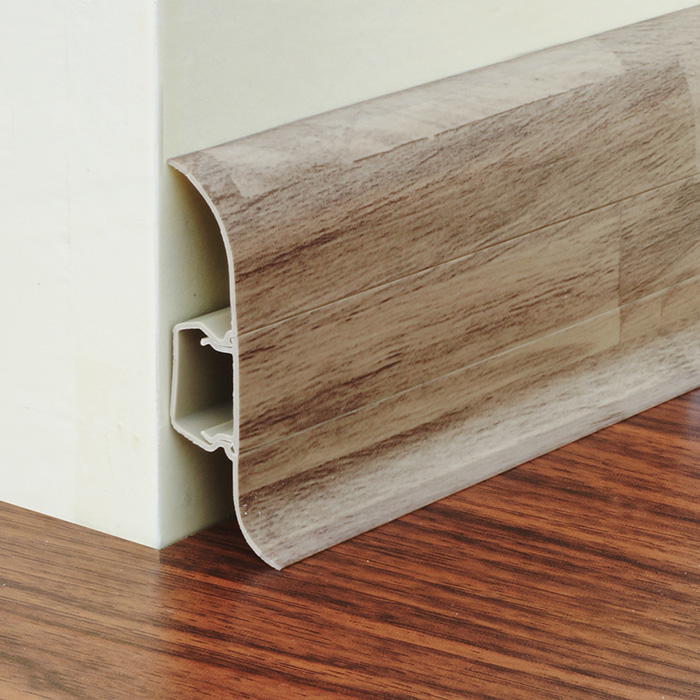PVC decorative trim is the unsung hero of home decor. Whether you’re looking to update your interior design or add a touch of elegance to your exterior, PVC trim offers a myriad of benefits. In this comprehensive guide, I will share my personal experiences, delve into the advantages and disadvantages of using PVC decorative trim, and provide valuable installation tips. Buckle up, as we embark on this journey to transform your home’s aesthetic!
What is PVC Decorative Trim?
PVC, or polyvinyl chloride, is a versatile plastic widely used in construction for its durability and weather resistance. Decorative trim made from PVC is designed specifically for adding aesthetic value to structures while providing structural support. It’s available in various styles, sizes, and finishes, making it suitable for both interior and exterior applications.
Advantages of PVC Decorative Trim
- Weather Resistance: Unlike wood, PVC is not susceptible to rot, mold, or insects.
- Low Maintenance: Requires minimal upkeep compared to traditional materials.
- Versatility: Available in various designs and can be painted or left in its natural finish.
- Cost-Effective: Provides an affordable decorative option without sacrificing quality.
- Ease of Installation: Lightweight and easy to cut, making it ideal for DIY projects.
Disadvantages of PVC Decorative Trim
- Temperature Sensitivity: PVC can become brittle in extreme temperatures.
- Limited Authenticity: Some homeowners prefer the look and feel of natural materials.
- Potential Fading: UV exposure can lead to color fading over time.

Types of PVC Decorative Trim
PVC decorative trim comes in various forms, each serving different purposes:
Crown Molding
Crown molding adds an elegant touch to interior spaces, seamlessly transitioning walls to ceilings. It’s perfect for living rooms, dining areas, and bedrooms.
/product/57/672634/1.jpg)
Baseboards
Baseboards provide a finished look at the bottom of walls while protecting them from scuffs and damage. PVC baseboards are an excellent choice for high-moisture areas like bathrooms.
Window and Door Trim
Enhance the aesthetics of windows and doors with decorative trim that frames them beautifully. This type of trim also offers protection against the elements.

Chair Rails
Chair rails are decorative strips that run horizontally along the walls, adding visual interest while protecting them from damage.
Comparing PVC Decorative Trim with Other Materials
When considering decorative trim, it’s essential to compare PVC with traditional materials like wood and fiber cement. Here’s a summary:

| Feature | PVC Trim | Wood Trim | Fiber Cement Trim |
|---|---|---|---|
| Durability | High | Medium | High |
| Cost | Low to Medium | Medium to High | Medium |
| Maintenance | Low | High | Medium |
| Moisture Resistance | Excellent | Poor | Good |
| Installation Ease | Easy | Moderate | Moderate |
Personal Experience with PVC Decorative Trim
When I first decided to remodel my living room, I faced the daunting task of choosing the right materials. After researching various options, I opted for PVC decorative trim to accentuate the walls. The installation process was surprisingly easy. I was able to cut the pieces to size with a miter saw and use adhesive to attach them. The results were stunning—a fresh, modern look that made the room feel larger and more inviting.

Installation Tips for PVC Decorative Trim
- Measure Twice, Cut Once: Accurate measurements are crucial for a flawless installation.
- Use a Miter Saw: A miter saw provides clean, precise cuts for corners and joints.
- Adhesive and Fasteners: Use appropriate adhesive and consider nails or screws for added security.
- Paint or Finish: If you plan to paint your trim, do so before installation for easier application.
- Seal Joints: Consider caulking joints for a seamless appearance.
Maintenance of PVC Decorative Trim
One of the significant advantages of PVC trim is its low maintenance requirements. Nonetheless, occasional cleaning is recommended:
- Regular Dusting: Use a microfiber cloth to remove dust buildup.
- Gentle Cleaning: For stains, use a mixture of mild soap and water to wipe down the surface.
- Avoid Harsh Chemicals: Strong solvents can damage the trim’s finish.

Frequently Asked Questions (FAQs)
Is PVC trim suitable for outdoor use?
Yes, PVC trim is highly resistant to moisture and weather elements, making it an excellent choice for outdoor applications.

Can PVC trim be painted?
Absolutely! PVC trim can be painted with acrylic or latex paint. It’s recommended to use a primer for the best results.
How does PVC trim hold up against termites?
PVC is impervious to termites and other pests, making it a safe choice for homeowners concerned about infestations.
Can you use PVC trim in high-moisture areas?
Yes, PVC trim is an ideal choice for bathrooms, kitchens, and other areas prone to high humidity.
What are the color options for PVC trim?
PVC trim is available in various colors and can also be painted to match your decor. Standard colors include white, beige, and light gray.
Conclusion
PVC decorative trim is a fantastic option for homeowners looking to enhance their spaces economically and stylishly. With its myriad of advantages, ease of installation, and low maintenance requirements, it’s easy to see why it’s become a popular choice for modern homes. Whether you’re a seasoned DIYer or a novice, I encourage you to consider PVC trim in your next home improvement project. You might be surprised at how much of a difference it can make!